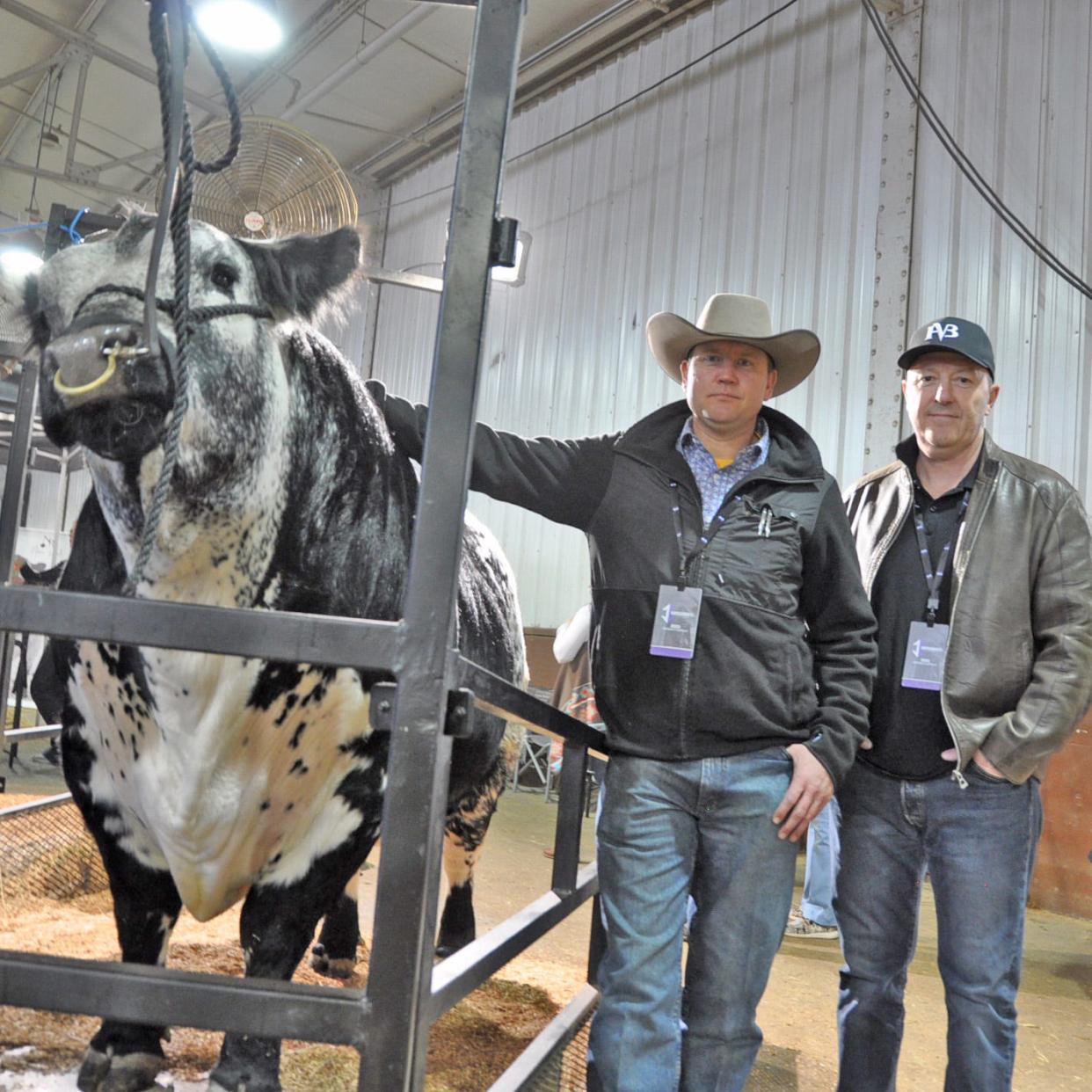Speckled Canadian beef breed seeks to expand appeal

For the past decade, Jason Goodfellow has been making the trip more than 2,400 miles south from central Saskatchewan to the central U.S. to promote what he hopes will become a popular beef breed here.
Amid the pomp and glitz that surrounds the annual winter livestock shows and high-dollar bull sales, his Speckle Park cattle stand out, due to a striking hide pattern that serves as a highly visible form of branding.
“It’s a color pattern that everyone can instantly recognize,” said Goodfellow, who is owner-operator of Notta Ranch.
Speckle Park cattle originated in his isolated Canadian valley, where they were developed by a handful of breeders insulated from the whims of the show ring that drove many mainstream breeds toward impractical extremes. According to Goodfellow, he and his neighboring ranchers stuck with the moderate framed, easy fleshing bloodlines that dominated the Angus breed in the 1940s and 50s.
The spotted hide pattern came from crossing these traditional “old school” Angus cattle with Shorthorn and White Park genetics. Area ranchers continued to refine the breed, and in 2006 it was formally recognized by the Canadian government.
Nowadays in the U.S. show ring preferences have swung back toward more moderate-framed cattle, and marbling and carcass traits are getting more emphasis than ever before, all of which means the breed is well positioned to fit current trends, Goodfellow said.
He estimated around 100 Speckle Park calves will be born on American soil this year.
The breed is already popular in Canada, where calves number in the thousands.
It’s even more popular in Australia, where it commands a premium, according to Peter Alexander, a cattle breeder there and owner of Hidden Valley Beef.
“The feedlots really go after them,” he said.
He estimated 15,000 to 20,000 head a year of Speckle Park are currently being produced in that country.
Alexander believes their ease of fleshing has the potential to “democratize” grass-fed beef production, which could lead to enhancement of the environment through rotational grazing management. The cattle are docile, polled and easy calving.
In addition, the Speckle Park’s durability allows them to take the Canadian cold but also the Australian heat, Alexander said.
“They’re pretty special,” he said.
Their striking coat doesn’t hurt their appeal either. Small hobby ranchers sometimes buy herd bulls, cows or semen just so they can admire the spotted cattle grazing on their properties, Alexander noted.
That said, there’s more to their allure than meets the eye, and that’s the real selling point.
“The biggest thing for us is beef quality,” Goodfellow said. “The real beauty of these animals is what’s underneath the hide.”
Beef from the animals is so highly marbled it is sometimes compared to Wagyu.
Goodfellow is planning to open his own on-farm beef store back home in Neilburg, Saskatchewan, in March. It’s being built using insulated concrete forms, or ICF, a technique that relies on precision manufacturing to make building blocks that provide environmentally friendly insulation.
He and Alexander said plans are moving forward with an American breed registry, and they are hoping to help organize some breed shows in the U.S., perhaps as early as next year.
This article originally appeared on LA Junta Tribune: Speckled Canadian beef breed seeks to expand appeal

